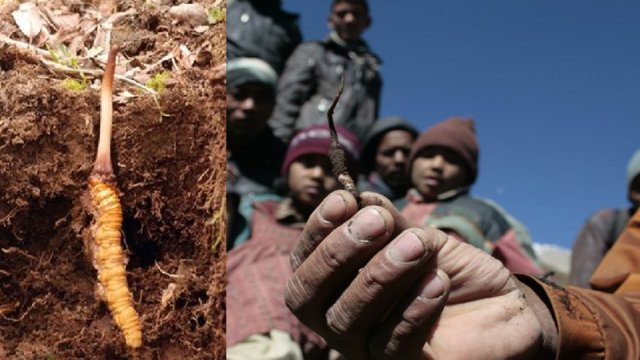Himalaya Viagra and the threat of biodiversity loss

Another natural miracle species has recently come to light dubbed - Himalaya Viagra. It is a fungus called Ophiocordyceps sinensis (C. sinensis).
In nature, the C. sinensis fungus colonizes and eventually kills the larvae of the ghost moth, which lives high in the Tibetan Himalayas (between 3,000 and 5,000 feet high). C. sinensis is also called “caterpillar fungus” or yartsa gunbu, which translates to “winter worm, summer grass.”
With the use of this non-addictive fungus, your focus goes through the roof, and your energy feels illimitable. Physically, you feel more powerful and virile. There have been scientific studies that investigate how it affects exercise, anti-aging treatments, or even cancer progression. It has a strange scientific history that started with Nyamnyi Dorje in the 1400s but has since blossomed as scientists try to understand precisely what it does.
The price in China has jumped by a factor of 10 over the past decade. These rare Asian fungi sell for as much as $50,000 a pound - more than gold. Because the fungi are so valuable, it has led to violence. Recently in Nepal, seven men went missing after a dispute over territory, and two of them were later discovered dead at the bottom of a steep ravine. However, it has also brought wealth to these remote regions. The most common similar product in North America is called CS-4, which is a cultivar - a plant variety that has been bred exclusively by scientists for cultivation. Yes, you can buy it on Amazon, but it is far less potent than the real thing.
Overharvesting and overexploitation have led to the classification as an endangered species in China. Yet another organism found in nature that could bring great benefit to humankind. And yet another organism under threat by humankind. This brings News Forecasters to the issue of biodiversity loss.
Biodiversity is defined as the totality of genes, species, and ecosystems in a defined area. It's estimated 86 percent of species are still undiscovered. Thanks to humans, we may never get the chance to find them all. Biodiversity loss is becoming a bigger problem than we ever thought it could be. It's estimated that half of all the species on the planet could go extinct by 2050 - only 32 years from now. Common causes include:
- Deforestation: When we cut down a forest to use its lumber, or claim the land for agricultural purposes, we are destroying unique ecosystems that can't exist anywhere else.
- Invasive Species: Species introduced in an area where they have no natural predators can decimate an ecosystem. Good examples of this are the pythons in the Florida Everglades and lionfish in the Gulf of Mexico. Most of these invasive species are linked directly to human intervention.
- Pollution: Garbage dumped into the water supply, chemical runoff from industrial applications, and air pollution from cars and factories all have a negative effect.
- Climate Change: Changes in the climate can happen naturally over millions of years - just look at the end of the last ice age. This time, though, climate change has been the result of human intervention. It's happening too quickly, and species can't adapt quickly enough, so they're dying out.
- Overfishing: It's difficult to put a number on overfishing because most of the ocean is still unexplored, but it's estimated that anywhere from 60 to 90 percent of the ocean has been overfished or is on the verge of collapse.
- Overpopulation: There are currently 7.4 billion people on the planet. Experts estimate that the planet is only capable of supporting roughly 10 billion souls, a number we're expected to reach and exceed in the next 100 years.
Should we care about biodiversity loss? Well, not to speak of just the natural beauty, there are real-life concerns on biodiversity loss. Increasingly, medicinal species that reside in natural areas have received scientific and commercial attention. In the U.S., of the top 150 prescription drugs, at least 118 are based on natural sources. Then there is the issue of food chains being destroyed, leading to higher food prices and even potentially famines. Still, other issues of climate change that are exacerbated and even poor forestry management leading to risks to the very air we breathe.
As the climate change political football rages on, one of the issues News Forecasters worries most about is that the climate change crisis crowds out other issues that can be proven more definitively and may even pose greater risks. Biodiversity loss is one such issue.
It is hard to estimate how real the biodiversity loss issue is, but News Forecasters suggests that this risk is more likely to be real and will have far greater impacts on the globe than climate change. The claims that climate change advocates make are most likely less than 5% real, while biodiversity loss is at least a 50% reality. Unfortunately, biodiversity loss won't get the attention as it should.